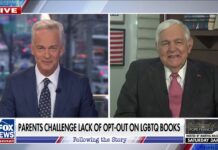
While cost remains the biggest barrier to accessing PrEP for gay and bisexual men in Canada, they also felt pressure to take PrEP and have sex without condoms, with younger men tending to feel less anxious about HIV transmission. This reflects shifting social and sexual norms in the era of PrEP and U=U, according to recent qualitative research.
While pre-exposure prophylaxis for HIV (PrEP) has been approved in Canada since 2016, implementation has been impeded by cost challenges. Certain provincial health insurance plans, including British Columbia’s, fully cover PrEP for gay and bisexual men who meet the guidelines. However, this is not the case in other provinces, such as Ontario, where PrEP is fully covered until the age of 25, over the age of 65, and for those receiving disability grants and social assistance. Across Canada, eligible Indigenous people, members of the armed forces and military veterans can access PrEP.
The study
Dr Mark Gaspar from the University of Toronto aimed to better understand PrEP-decision making among HIV-negative gay, bisexual and queer men. Drawing on the PrEP Cascade, which considers readiness for PrEP, seeking PrEP out and discussing it with a healthcare provider, he and colleagues conducted 45 in-depth one-on-one interviews between March and October 2020 (all but one were over Zoom) with men in Ontario and British Columbia.
Forty percent of the men were aged 30-39, while just under a third were between 20-29. Most men identified as cisgender (91%), and gay (87%), while 38% were White, 16% East Asian and 13% Black. Thirty-seven of the 45 men were taking or had taken PrEP. Thirty-eight percent lived in the greater Toronto area, while 33% resided in Vancouver.
The costs of accessing PrEP
The cost of PrEP presented the biggest access barrier, particularly in Ontario. Some participants said they felt PrEP was “only for rich people” as access to PrEP often depended on having a job with private health insurance and being able to paying the co-pay associated with PrEP. For men participating in the ‘gig economy’ or for those changing jobs and insurance plans, consistent access to PrEP presented a challenge.
While many participants acknowledged that if they wanted to access PrEP, they could do so, they were aware of the effort involved in getting PrEP consistently, including transportation costs and taking time off work to go to medical appointments. Thus, in addition to viewing themselves as at risk for HIV, they also needed to feel that PrEP’s value outweighed all associated costs. For some men, despite seeing themselves as being at a high risk for HIV and needing to access PrEP, cost presented too prohibitive a barrier. For those who could afford PrEP, other barriers were seen as less significant.
Health concerns related to PrEP
Men who were hesitant about taking PrEP tended to voice the strongest concerns about side effects, contracting other STIs and the effectiveness of PrEP. In general, participants agreed that PrEP was highly effective at preventing HIV. Some participants expressed concerns regarding the fact that PrEP contains anti-HIV drugs, and its effects on their kidneys, bones and liver, although none of the interviewees had themselves experienced such problems:
“I don’t have a concern with [immediate, short-term] side-effects. I just haven’t seen what it does to the body. We have to see what it does to the body after five to ten years, or three years, you know?”
One user shared that he would often pause his PrEP due to concern over side effects. However, most men viewed side effects as temporary, or easily reversible if PrEP was stopped.
Another concern related to contracting STIs other than HIV; the necessity of PrEP was questioned if one could simply use condoms to prevent all STIs:
“Yes, [I am concerned with] side effects and also what’s the . . . if I still need to wear a condom—so a condom is supposed to prevent HIV and other STIs. If you take PrEP it’s going to protect you against HIV but not everything else. So then taking PrEP and using a condom I think is overdoing it. So just use a condom and get it over with. That’s my simple-minded thinking. And I don’t like condoms. So that’s why I would end up with the unsafe sex situation [on PrEP].”
PrEP’s impact on sex
Participants shared varied experiences regarding the effects PrEP had had on their sex lives. Several had more sex and used condoms less. In some relationships, PrEP opened the door to exploring non-monogamy. However, there were some men who stated that their sex life had remained unchanged and questioned whether they needed PrEP. According to one participant: “Like I’m wasting it. Like I’m taking it but I’m still not that [sexually] active, you know?” However, one participant stated that he was glad that he kept taking PrEP, despite not thinking that he needed it at one point. This challenges the notion of risk as fixed and instead indicates that it fluctuates over time, with PrEP being more necessary at some points than at others. Additionally, some men start PrEP not because they see themselves as being at high risk, but rather to try it out and see how it fits in with their sex lives.
“Previously a man could be accused of being promiscuous for taking PrEP, now he was viewed as responsible for doing so.”
Linked to this, many PrEP users shared how they stopped, paused and restarted PrEP at different points. Men spoke about using event-based dosing or planning sex around PrEP dosing, but stated that it was difficult to find accurate information on using PrEP episodically:
“I guess even if someone asks me, oh do you want to have sex and I say yes, if I’m not on PrEP at that time I’ll usually kind of set a date with them a week from now or more than a week so I have time to ramp up the PrEP again.”
PrEP contributed to how men planned both their immediate and future sex lives. One participant stated that he hoped to be in a long-term monogamous relationship once he turned 25, as PrEP would no longer be covered by provincial insurance in Ontario at that age:
“I want to finally settle down, and be with someone exclusively and not have to worry about hooking up and stuff.”
Changing social and sexual norms
Men stated that norms around sex had changed because of PrEP, especially regarding condom use and notions of ‘safe sex’.
“There are some people that just don’t want to use condoms and if you want to have sex with them, that’s kind of where you’re gonna be.”
For some participants, this had a distinct racial element to it, with PrEP being seen as something associated with White gay men. This association meant that some Black gay men would not take it unless other men they knew were taking it, or they could risk being seen to cater to the whims of White men.
“If my Black friends aren’t taking it then I’m obviously not going to take it.”
Participants also described an evolution of perceptions related to PrEP. Whereas previously a man could be accused of being promiscuous for taking it (“Truvada whores”), he was now viewed as responsible for doing so.
“I would get guys saying, ‘no thanks, I’m not interested’ and I’d be like oh ok, and they’d be like, ‘well you’re on PrEP and I don’t want to hook up because you’re obviously on a whore rampage.’ That’s been said to me a few times. Now it’s like, I talk to guys who aren’t on PrEP and I’m like, ‘what the fuck, you’re not on PrEP, are you crazy?’”
However, some men resisted the pressure to take PrEP. For them, it was either not seen as necessary to ensure sexual safety, or it was viewed as a way for pharmaceutical companies to make a profit from the sex lives of gay men.
While some men on PrEP had become more confident in having sex with men with an undetectable viral load, and there was an acknowledgement that it could make disclosure easier, there were some who still expressed stigma towards those living with HIV in the era of PrEP.
“I’m on PrEP, yeah I feel comfortable hooking up with undetectable people.”
“Nowadays, guys who are [HIV-] positive don’t even feel like they need to tell you that they’re positive. [. . .] I’m just like, I don’t want to do it [have sex with HIV-positive men]. It’s my body I can do whatever the hell I want. It doesn’t mean I don’t understand all the facts.”
Generational differences
There were distinct generational differences in PrEP perceptions. Men who were sexually active in the 80s and 90s viewed it very differently to younger men, who tended to feel less anxious regarding HIV transmission.
“I always assumed that not using a condom equated to AIDS.”
“I’m [in my 40s]. So when I was like 20, like there wasn’t, you know, HIV was still like a death sentence kind of a thing. So, these kinds of things [like PrEP] are exciting, but I guess I yeah . . . I’m not sure, I don’t know what my hesitation is in terms of wanting to take it fully or know more about it.”
“I’ve not had a lot of anxiety around [HIV] transmission, I think part of that was because of that . . . I think more recent medical advancements in the treatment of HIV.”
There was also a sense that all the progress made regarding behavioural interventions would be lost on the younger generation with the advent of PrEP.
“So now to say, yo, take this pill and don’t even think about it. I was like, ugh, fuck, all of those years of behaviour change work sort of scuttled out in one moment.”
“My identity as a queer person, a queer man, was so interlinked with the looming threat of HIV that whether I was conscious of it or not, my early reticence and scepticism around these other options [like PrEP] was almost comparable to that example of an old person going, ‘oh well, I grew up it was really hard and these [younger] motherfuckers have it too easy.’ Well we all should have it a little bit easier, right? And so yeah, I was like, we should all be free of this [fear of HIV].”
Conclusion
“In addition to pragmatic barriers and biomedical concerns, PrEP has significant social implications with its uptake altering sexual practices and sexuality in diverse and complex ways,” the authors conclude. “The more healthcare providers and health promotion experts are able to understand these shifts in sexuality, the better equipped they will be at producing education, soliciting questions, and refining their messages to clients to ensure that gay, bisexual and queer men are making informed choices about PrEP that effectively reduce their risks.”








